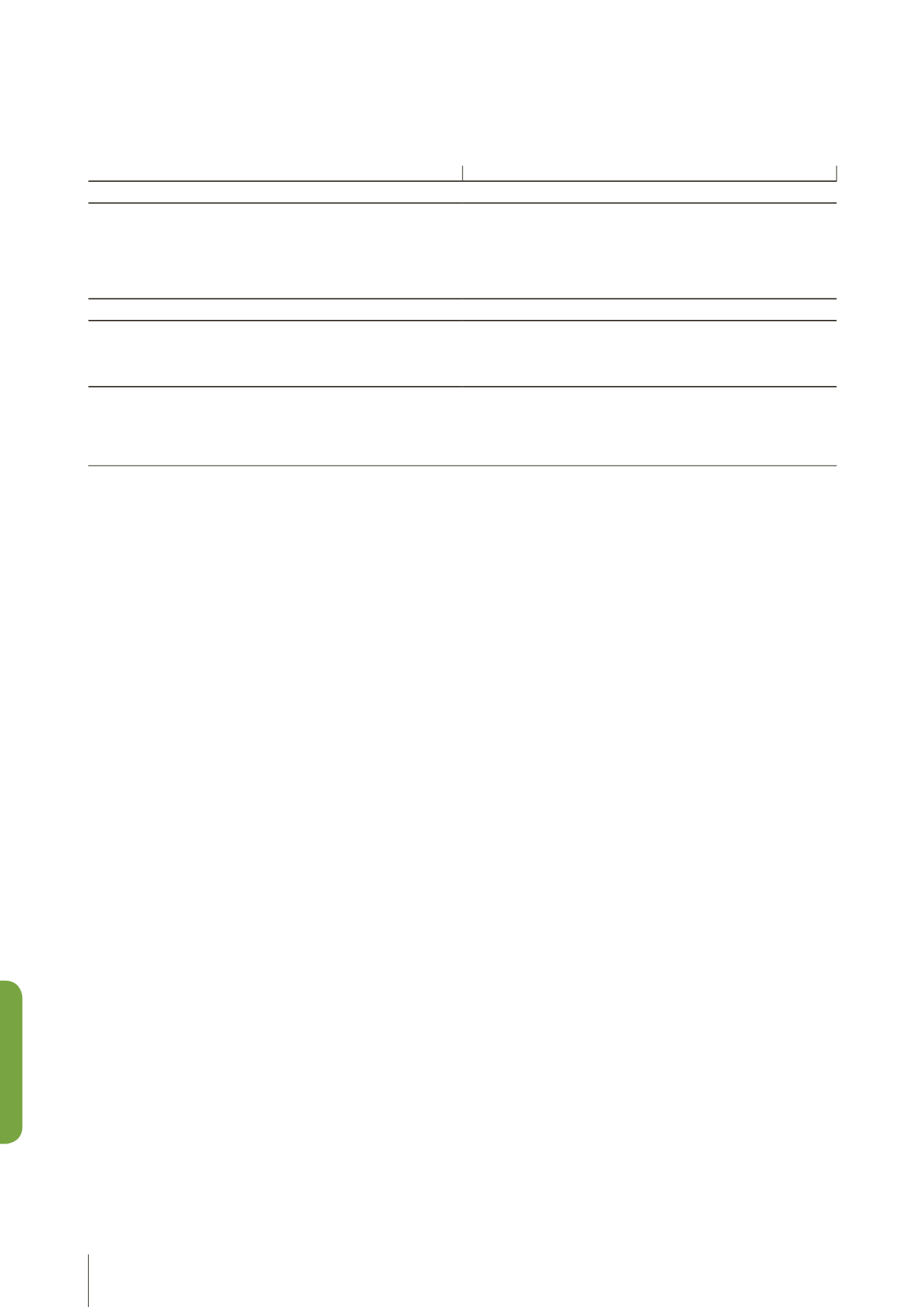
 148
LISI 2018 FINANCIAL REPORT
INFORMATION REGARDING THE COMPANY
AND CORPORATE GOVERNANCE
7
148
LISI 2018 FINANCIAL REPORT
INFORMATION REGARDING THE COMPANY
AND CORPORATE GOVERNANCE
7
2.5
I
Implementation of the “apply or explain” rule of the AFEP‑MEDEF Code
Provisions of the AFEP-MEDEF code not complied with
Explanations
Number of independent members on the Board
Art 8.3:
the proportion of independent directors in the companies controlled
should be at least one third.
AccordingtothecriteriaoftheAFEP-MEDEFCodereferredtobythecompany,
Pascal Lebard, who has been a director for over 12 years, no longer enjoys the
statusof independentdirector.Consequently,theruleaccordingtowhichthe
Board should comprise one third of independent directors is no longer
respected. He is considered a “qualified person”.
There are five non-Group* directors, i.e. 36% of the Board members.
LISI shares to be held by directors
Art 20:
unless otherwise required by law, each director must personally own a
relatively significant number of shares in relation to the attendance fees
received: Directors who do not have the required number of shares when they
take up office shall use their attendance fees to acquire them.
Directors who do not yet comply with this recommendation shall rectify the
situation at the earliest possible date.
* Independent directors and qualified persons
3
I
Internal control of the company
Description of the internal control environment
3.1
I
General description
The wider internal control environment is based on a decentralized
organizationwithineachdivision.AnExecutiveCommittee isresponsible
for ratifying a global policy, which must then be channeled down to each
individual department.
TheGrouphassetoutanumberofprocedures,summarized inanInternal
Group Control manual, which is available to all relevant Group staff via an
intranet site. This manual is supplemented by a Group accounting
procedures manual. In addition, the Group has deployed a uniform
reporting and information system in each division using an identical
procedure each time.
The specific features of theLISI Group’s activities requireprecisequality
control to be carried out on operational processes in the following areas:
■■
production, stock, flowmanagement;
■■
quality;
■■
health, safety and environment;
■■
personnel, payroll;
■■
accounting, management control and cash flow;
■■
purchasing and investments;
■■
sales;
■■
IT systems.
Action is takenwithin the Group on a continual basis to ensure that these
mechanisms are effective. This action is regularly assessed using
performance tables.
Notethattodate,CorporateSocialResponsibilityissues,suchasthefight
against corruption and some matters relating to the vigilance duty, are
not fully included in the current quality checks. The plan for developing
these two themes is outlined in Chapter 6 – Topic 8.
3.2
I
Supervisory bodies
■■
The Group’s Board of Directors is the most senior decision-making
entity. The Group’s Executive Committee channels the information to
thedivisions,whicharethemselvesorganizedinsuchawaythatenables
their management to carry out the Group’s decisions at individual
department level.
■■
The Audit Committee, which includes two independent directors, is
acquainted, in concert with the external auditors and the Internal Audit
Manager, with the senior management and risk management
environment at the time of publication of each financial statement.
■■
The internal audit unit comprises the Group internal audit manager
assisted by an auditor. Depending on the scale and nature of the task to
beperformed, internalandexternal partnersmay beco-optedto round
off the team.
■■
Coordination with the external auditors is particularly close in order to
direct controls specifically towards areas that have been identified as
being high-risk and to allocate sufficient time to the task.


















